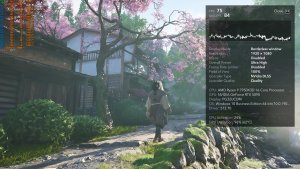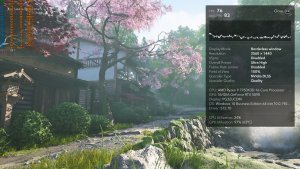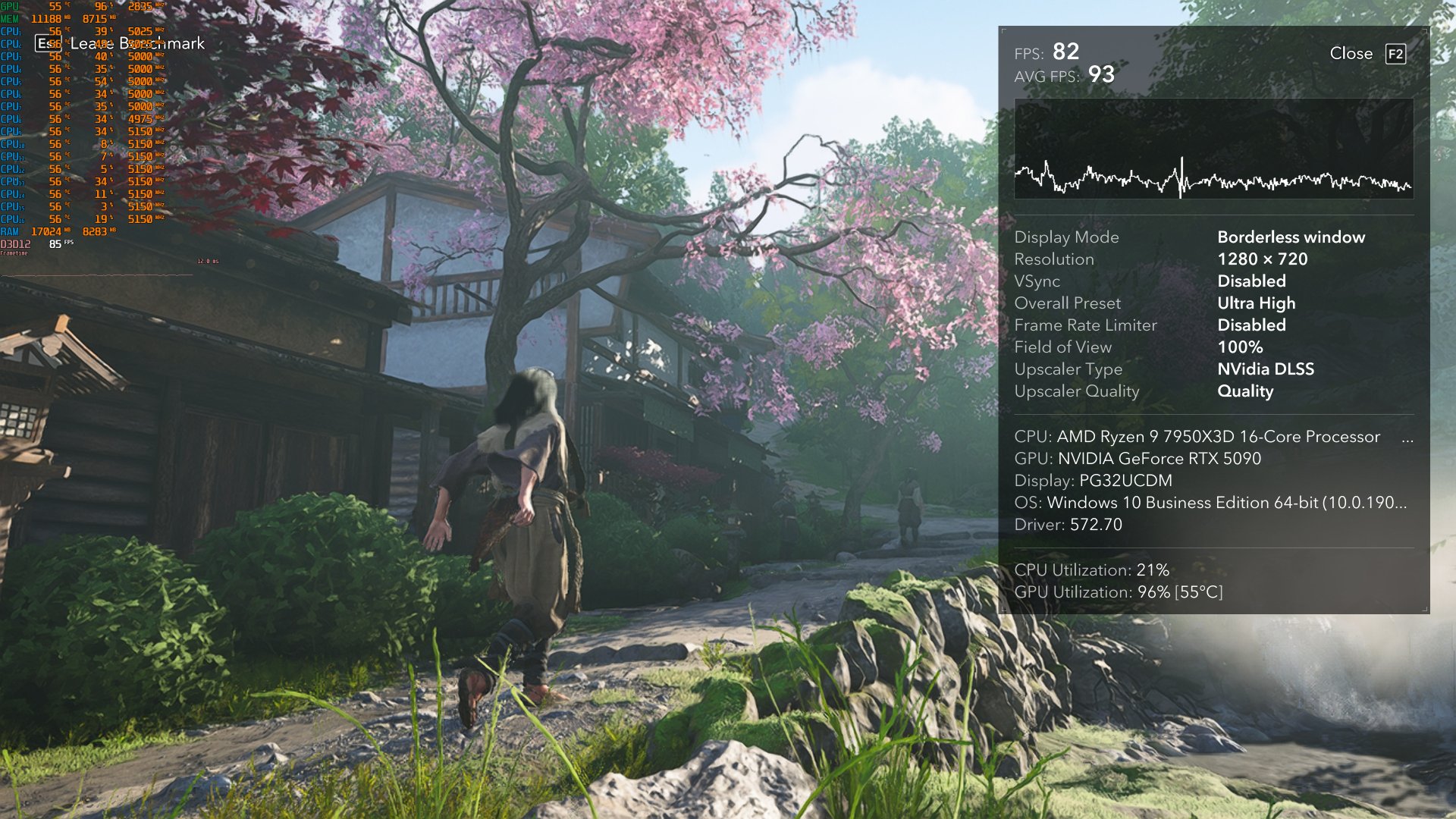Ubisoft has lifted the review embargo for Assassin’s Creed Shadows and it appears that this new AC game suffers from major optimization issues on PC. The game does not currently appear to be able to take advantage of modern-day CPUs and GPUs. And, like most of the previous AC games, it runs horribly on NVIDIA’s hardware.
For our tests, I used an AMD Ryzen 9 7950X3D with a Gigabyte Motherboard X670E AORUS MASTER, G.Skill Trident Z5 Neo RGB 32GB DDR5 RAM at 6000Mhz and an NVIDIA GeForce RTX 5090 Founder’s Edition. I also used Windows 10 64-bit and the NVIDIA GeForce 572.70 WHQL driver.
For those unaware, AC Shadows is mostly a rasterized game. In other words, it’s not a game that requires an RT GPU, like Avatar: Frontiers of Pandora or Star Wars: Outlaws. The good news is that the devs have added support for RTGI. The bad news is that performance is all over the place. And that’s even without RT.
So while testing the game with all its RT effects, I got some really strange results at 1080p and 1440p. You see, the game ran exactly the same at those two resolutions on Ultra High with Max RT and DLSS 4 Super Resolution Quality. This usually indicates a CPU bottleneck. Sorry, what? A CPU bottleneck with an AMD Ryzen 9 7950X3D?
So I began investigating. Here are two screenshots from the benchmark at 1080p and 1440p. As you can see, while performance remains the same, the GPU utilization is at 96%.
So, you know what? I said “F’ck it, let’s go as low as possible”. Thus, I lowered my resolution to 720p with DLSS 4 Quality. And… well… let this screenshot speak for itself.
At 720p with RT, Ultra High and DLSS 4 Quality, the NVIDIA RTX 5090 is still used at 96%. Fair enough, this shows that the game is GPU-bound. But why does it just run with 82FPS? By dropping to 720p (WITH DLSS 4) you only get 10FPS? Where did all the extra GPU power go to? To the Denuvo anti-tamper tech? It makes no f’ing sense.
Assassin’s Creed Shadows is using AnvilNext. And, to be honest, I don’t know what the hell Ubisoft has done to it. All I know is that the game underperforms on the PC. The only solution here is to enable DLSS 4 Frame Gen or AMD FSR 3 Frame Gen.
The reason I say this is because the performance gains from the in-game graphics presets are all over the place. While you can improve performance by dropping to Very High, you won’t get any improvements when you drop the settings to High. So, good luck running the game in its current state on anything less than a top-of-the-line PC.
Not only that but AC: Shadows works best on AMD’s hardware. In this game, the AMD Radeon RX 7900XTX matches the performance of the… NVIDIA RTX 4090. Yep, you read that right. In this game, the RX 7900XTX is as fast as the RTX 4090. This is nuts. As for the AMD Radeon RX 9070XT? It’s as fast as the… NVIDIA RTX 5080. Holy hell.
At this point, it’s crystal clear that Assassin’s Creed: Shadows suffers from MAJOR optimization issues on PC. Yes, you CAN brute force your way with DLSS 4 Frame Gen or AMD 3 Frame Gen. Yes, you CAN get a better experience than that of consoles. Yes, you CAN run it with 60FPS on the best NVIDIA GPU. However, the performance results we get without any of the game’s RT effects are horrendous. The game performs HORRIBLY on all of the NVIDIA GPUs. At Native 1440p without Ray Tracing, the RTX 4090 cannot offer a constant 60FPS experience. No, I’m not kidding here. And as I showcased, the game cannot scale down properly even when you lower the resolution or the in-game graphics presets.
At this point, I don’t know if Ubisoft or NVIDIA should be blamed for this underwhelming experience. However, Atomfall, AI Limit and Half-Life 2 RTX (which I’m currently benchmarking) do not suffer from these issues. And yes, I was able to replicate the aforementioned issues multiple times.
Finally, be sure to check out our PC Performance Analysis (in which we’ve tested a lot of AMD and NVIDIA GPUs). Tomorrow, we’ll also have an article in which we’ll cover DLSS 4 and Ray Tracing.

John is the founder and Editor in Chief at DSOGaming. He is a PC gaming fan and highly supports the modding and indie communities. Before creating DSOGaming, John worked on numerous gaming websites. While he is a die-hard PC gamer, his gaming roots can be found on consoles. John loved – and still does – the 16-bit consoles, and considers SNES to be one of the best consoles. Still, the PC platform won him over consoles. That was mainly due to 3DFX and its iconic dedicated 3D accelerator graphics card, Voodoo 2. John has also written a higher degree thesis on the “The Evolution of PC graphics cards.”
Contact: Email





